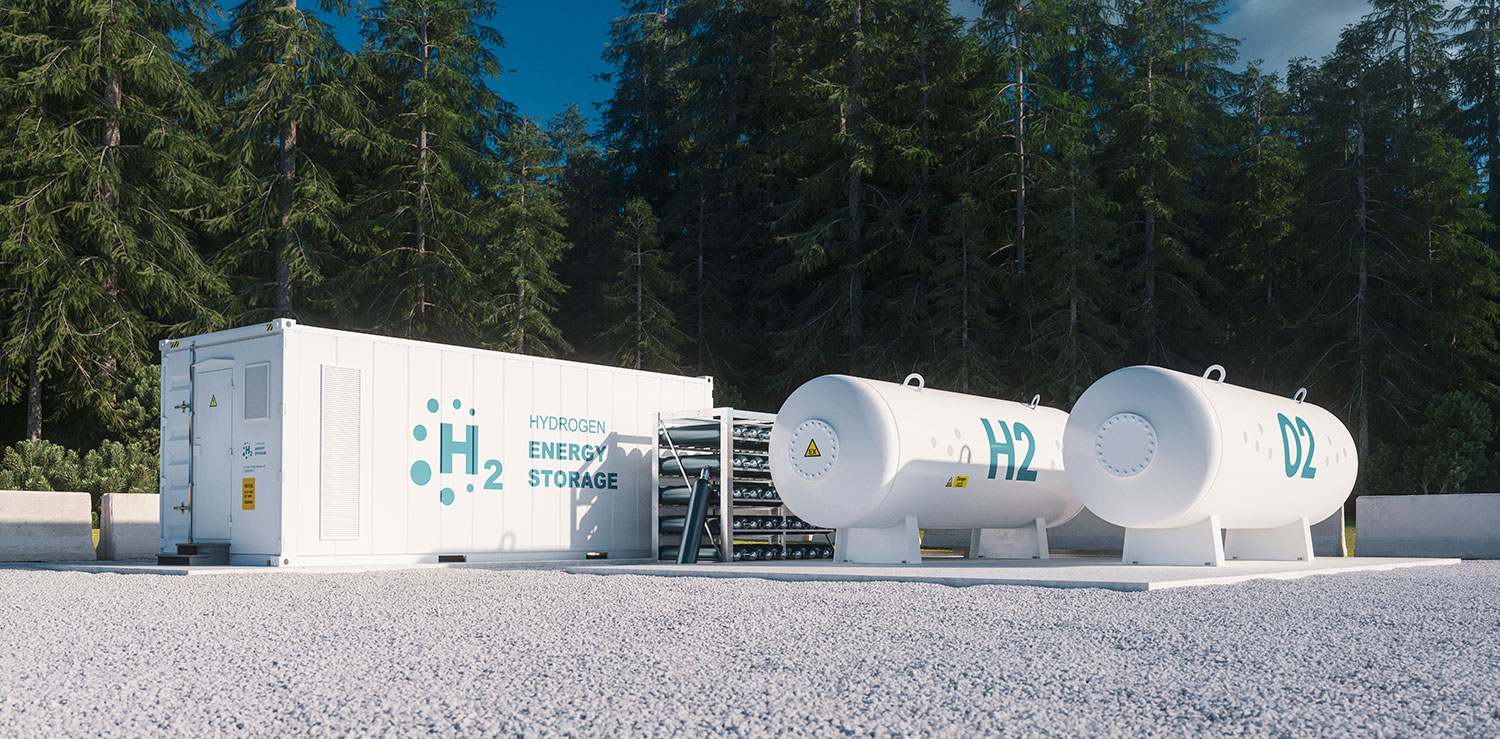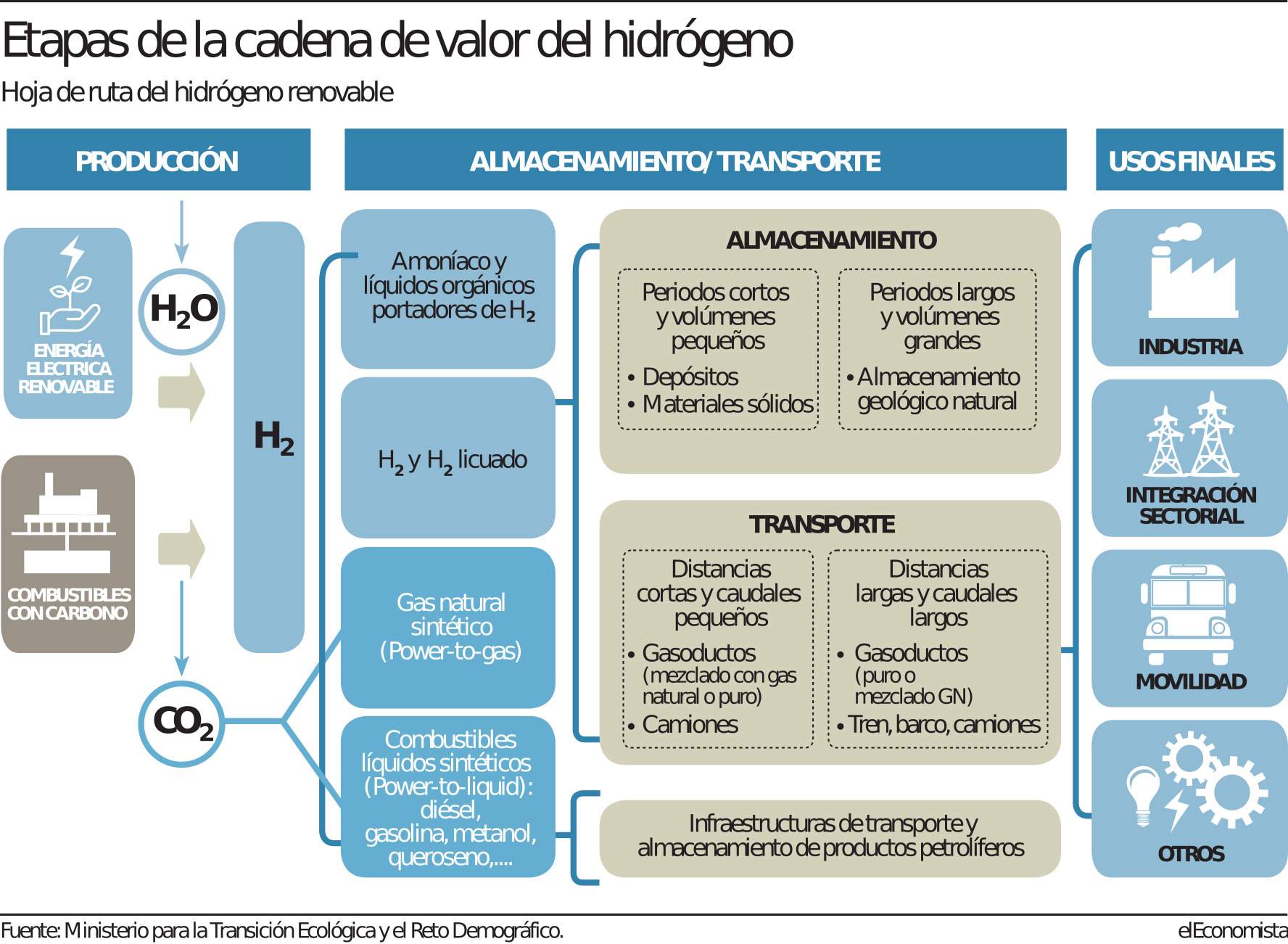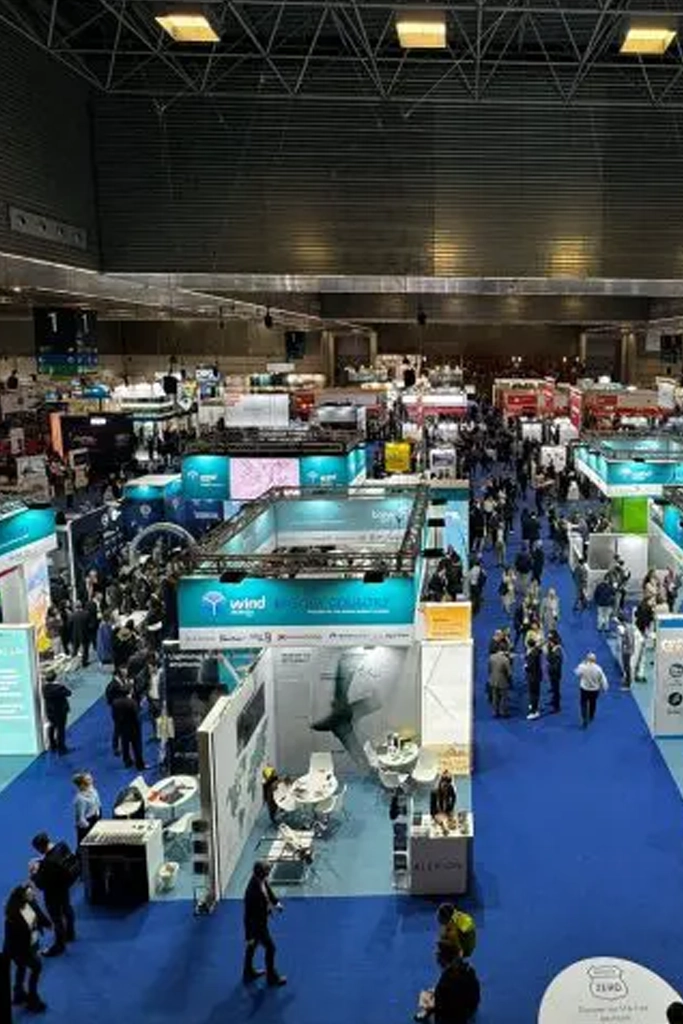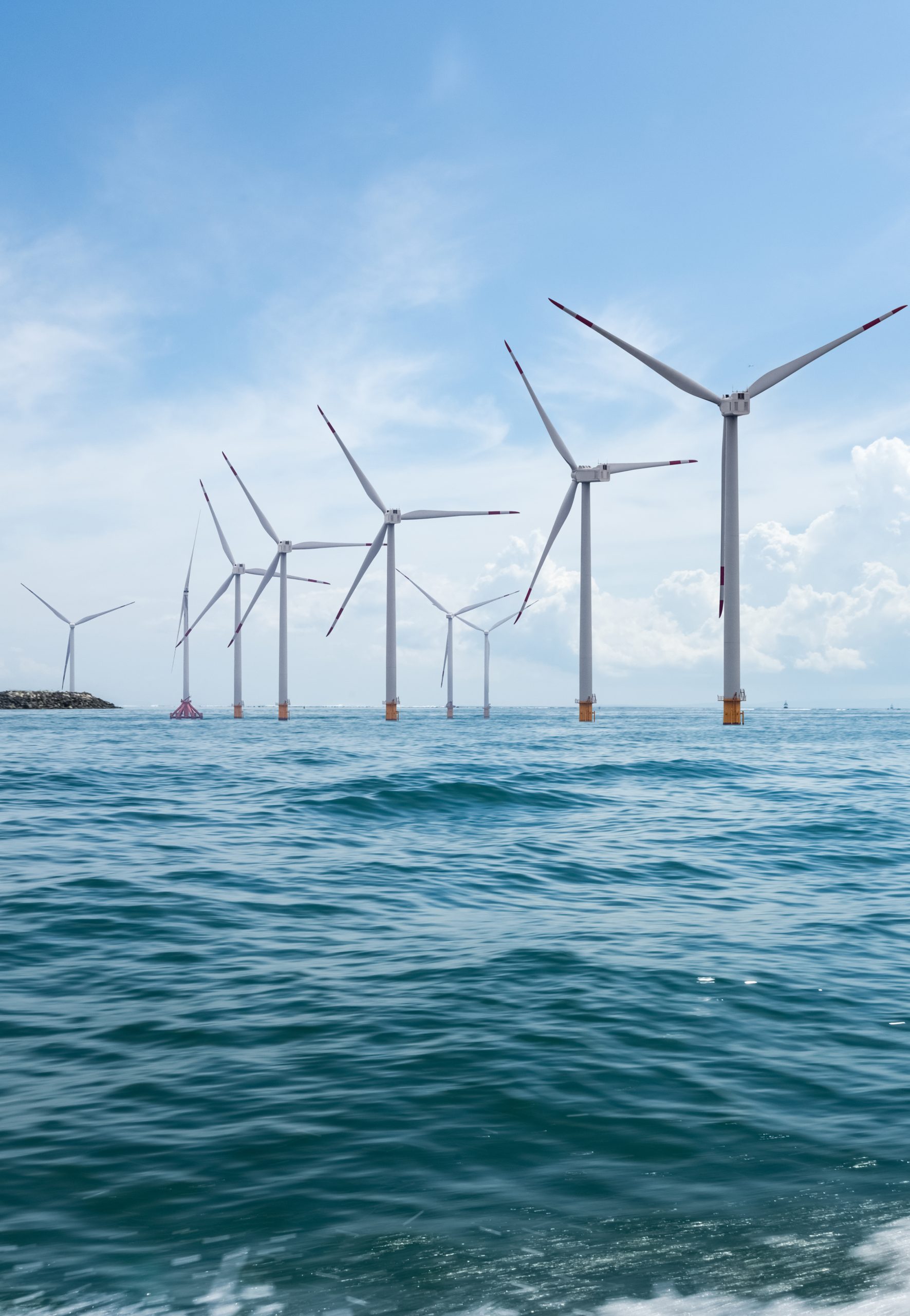
Green hydrogen, the EU’s big gamble
A total of 1.8 billion euros has been injected through EU budgets for the recovery of the European Union, with green hydrogen becoming one of the main pillars.
Thirty percent of this budget is earmarked for the fight against climate change, and it is here that green hydrogen has been climbing the ranks, growing in interest and positioning itself as a major factor in decarbonisation.
Importance of Green Hydrogen
Green hydrogen is produced by electrolysis, which involves breaking down the water molecule H²O into oxygen O² and hydrogen H² by the action of a direct electric current connected to the water by electrodes.
Within the Sustainable Development Goals (SDGs) of the United Nations and the commitments made by countries in climate change forums, it is expected that 24% of global energy demand by 2050 will be met by renewable energy, achieving a significant reduction in CO2 emissions and greenhouse gases. To achieve this challenge, it is important to develop new technologies based on non-polluting energies.
Performance in Spain
Spain has the best conditions in Europe for generating renewable energy and experts estimate that 42% of the green hydrogen capacity planned in Europe will be in Spain. The total investment in Spain for decarbonisation is expected to be 6.9 billion euros of financing, accompanied by another 9.5 billion euros of private investment.

Keys to success
Sources such as elEconomista.es point out that one of the major obstacles to renewable hydrogen is its current cost.
One of the great challenges for the deployment of this technology is to promote its cost competitiveness. According to the Hydrogen Council or IRENA, its current price is around 3.5 euros per kg, compared to 1.5 euros/kg for grey hydrogen, if the current rise in the cost of natural gas is not taken into account.
In this respect, the International Renewable Energy Agency (IRENA) sets out four main objectives to be achieved:
- Reduction of the cost of electrolysers by 80%.
- Reduction of electricity costs by 50%.
- Increased efficiency of electrolysers by 10% (up to 76%)
- Increasing the lifetime of the electrolysers by 50% (about 20 years)
Another of the circumstances studied by IRENA that is a relevant factor in the future of green hydrogen is future energy demand, which is expected to increase by 25-30% by 2040. These estimates, in an economy dependent on coal and oil, would mean a significant worsening of climate change.
European Funds
One of the indispensable elements for decarbonisation is the use of European recovery funds that will be used to innovate, develop and consolidate this new technology in our country. As the “Green Hydrogen Roadmap” points out, this document aims for Spain to lead research into this new energy to achieve 4 GW of production, 10% of the EU total, or for a minimum of 25% of what industry consumes to come from renewable sources by 2030.
The roadmap is the most supported element of the PERTE. 1.555 million, which will mobilise a further 2.8 billion in private capital. The investments are articulated along four lines:
- Measures to support SMEs and technology centres
- Sectoral integration that spatially concentrates production, processing and consumption on a large scale
- Development of pioneering projects
- Integration of the national value chain into the EU value chain
Ultimately, given the current and future scenarios facing green hydrogen, a number of challenges have been identified to ensure its deployment:
- Promoting their cost competitiveness
- Approval of the system of Guarantees of Origin, already in draft form
- Administrative simplification of formalities and homogenisation of administrative procedures in the different Autonomous Communities
- Elaboration of different decarbonisation strategies in sectors that are difficult to electrify
- Finally, simplification and facilitation of the development of direct electricity lines for renewable hydrogen production





